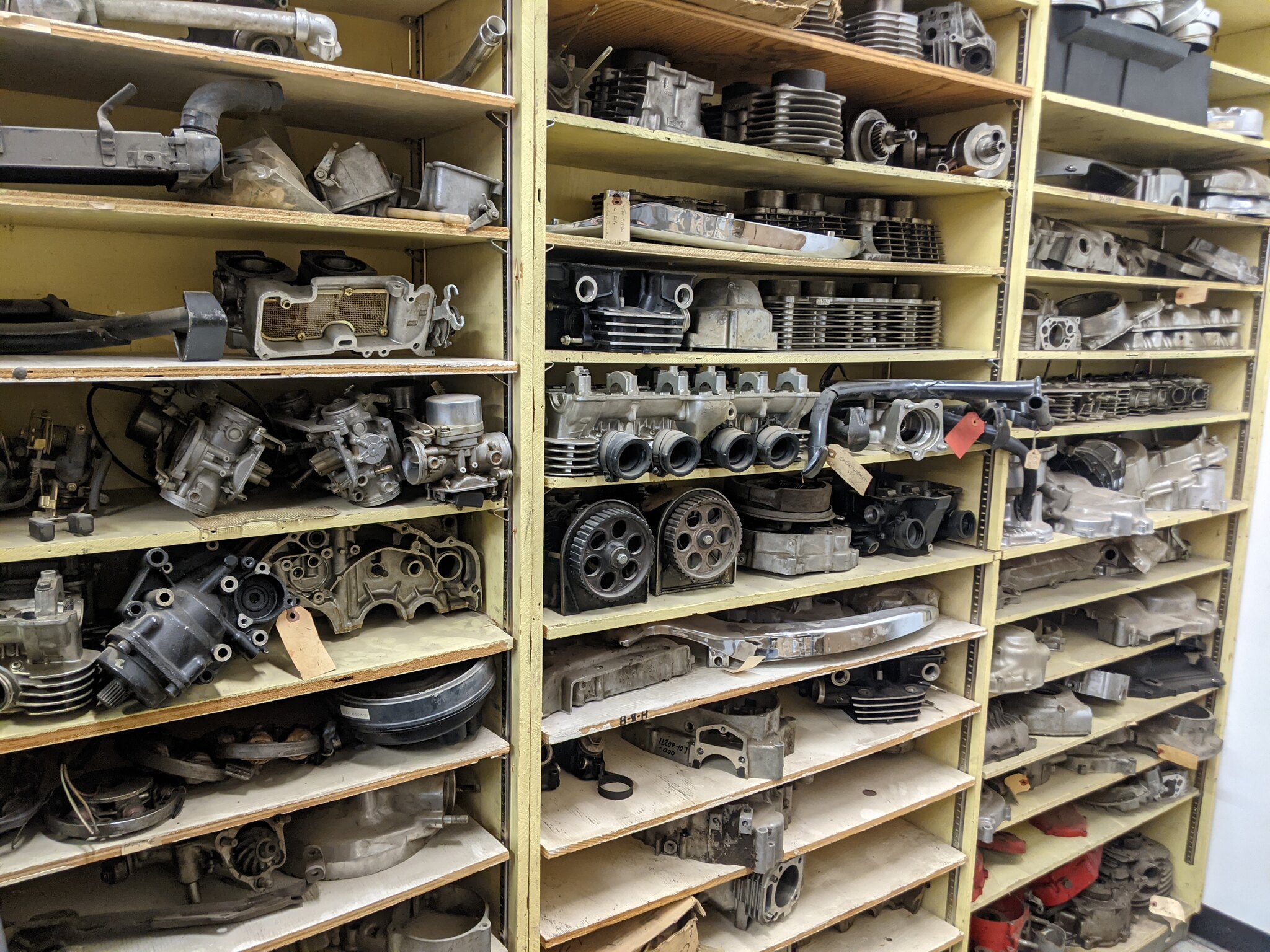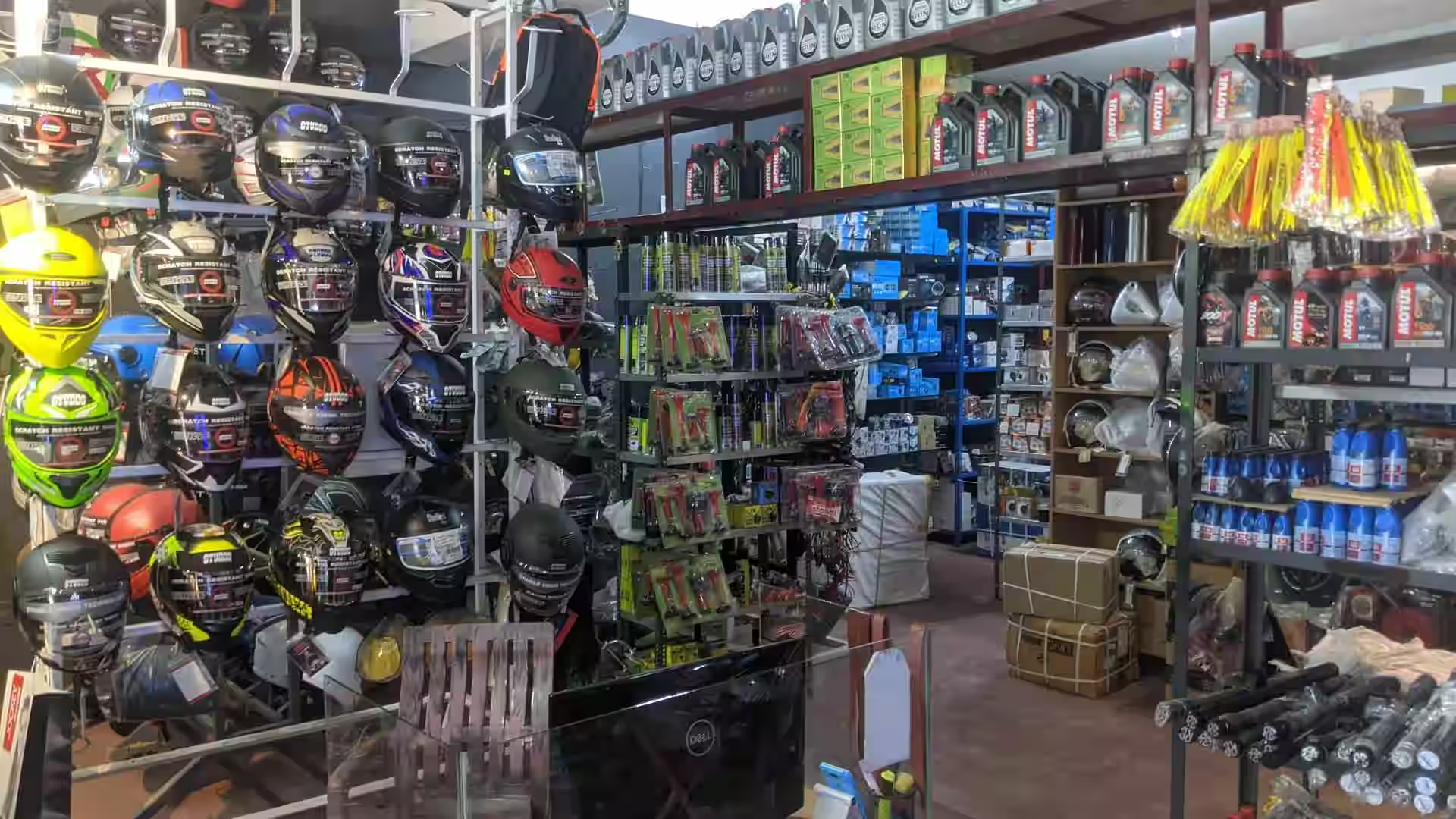Check Out the Latest Motocross Gear NZ for every single Degree of Rider
Check Out the Latest Motocross Gear NZ for every single Degree of Rider
Blog Article
Understanding the Essential Components of a Motorcycle: A Comprehensive Guide for Lovers
For motorcycle lovers looking to elevate their riding experience and ensure their bikes run efficiently, understanding the essential parts of a motorbike is paramount. Each element, from the engine's detailed functions to the critical role of the stopping systems, not just impacts efficiency yet additionally safety and convenience. This guide will certainly go through the essential components that every rider need to be familiar with, making it possible for educated selections in both maintenance and prospective upgrades. As we start this expedition, one must ask: just how does each element engage to develop the smooth adventure every lover seeks?
Engine Parts

The camshaft plays an important duty in managing the timing of the engine's valves, guaranteeing the precise opening and closing needed for efficient fuel and air consumption, as well as exhaust expulsion. This timing is crucial to preserving optimal engine efficiency and efficiency. Furthermore, the carburetor or fuel shot system, depending upon the bike model, is in charge of blending air with fuel in the appropriate proportion for burning.
The air conditioning system, either air or liquid-based, works to preserve the engine's temperature level within functional limits, stopping overheating and guaranteeing long life - motocross gear nz. Each part, carefully developed and integrated, adds to the smooth operation of the engine, specifying the bike's power output and total efficiency
Transmission System
Essential to the motorbike's capability, the transmission system makes sure reliable power transfer from the engine to the wheels. This system makes up a number of important elements, including the clutch, gearbox, and last drive, each playing a vital duty in translating the engine's power right into activity. The clutch, generally operated by a hand lever, serves to engage and disengage the engine from the transmission, allowing for smooth gear changes and controlled velocity.
The transmission, commonly described as the transmission correct, has a collection of equipments that cyclists can manually change through to adjust the bike's speed and torque result. These gears are organized in a sequence that enables the motorcycle to accelerate smoothly and keep optimum engine performance across various speeds. The majority of bikes make use of a consecutive gearbox, requiring the cyclist to move gears in a predetermined order.
Braking Mechanisms
While understanding the transmission system is vital to harnessing a motorcycle's power, similarly vital is the capacity to manage and stop that power efficiently, which is where braking devices come into play. Brakes are vital for safety and efficiency, offering the rider with the essential control to navigate different surfaces and conditions. Generally, motorcycles include 2 kinds of stopping systems: disc brakes and drum brakes.
Disc brakes are much more widespread in modern motorbikes due to their remarkable performance. They include a brake disc, caliper, and pads. you can check here When triggered, the caliper squeezes the brake pads against the rotating disc, transforming kinetic energy right into warmth, consequently slowing the wheel. This system supplies better warmth dissipation, consistent performance, and improved quiting power, particularly in damp conditions.
Alternatively, drum brakes, though less typical, are still discovered in some motorcycles. They work by pushing brake shoes against the inner surface of a drum connected to the wheel. While usually less reliable in warmth dissipation and stopping power, drum brakes are simpler and a lot more economical.
Understanding these braking systems' nuances enables bikers to keep their bikes appropriately and appreciate the engineering that makes certain safe and reliable stopping.
Suspension and Steering
Suspension and steering systems are vital parts that significantly influence a motorcycle's handling and experience convenience. The shock absorber, containing forks at the front and shock absorbers at the rear, soaks up roadway abnormalities, boosting security and control. Front forks, generally telescopic or inverted, compress and rebound to reduce effects, while rear shock absorbers maintain tire call with the roadway, vital for grip and security.
Steering, centered around the handlebars, attaches the cyclist to the motorbike's directional control. The steering head bearings guarantee smooth operation, permitting specific ability to move. Appropriate positioning and maintenance of these bearings are essential for predictable guiding reaction and minimizing biker tiredness.
The suspension's adjustability is an additional crucial facet; preload, damping, and rebound setups enable customization to suit different riding styles and problems. This versatility is necessary for optimizing efficiency, whether browsing urban roads or tackling sturdy tracks. Innovations like digital suspension systems offer real-time changes, enhancing adventure high quality throughout diverse surfaces.

Electrical Equipments
After making sure a smooth and controlled ride with efficient suspension and steering systems, interest turns to the electrical systems, a crucial element of modern-day motorcycles. These systems play a vital role not only in beginning the engine but likewise in powering numerous components that improve the capability and safety of the motorbike.
At the heart of a bike's electric system is the battery, which stores electrical energy essential for starting the engine and powering auxiliary systems - motorbike shop. The generator or generator, combined with the rectifier-regulator, makes sure the battery stays charged while the bike is in procedure, converting power into electrical energy and preserving voltage degrees
The ignition system, one more essential part, is responsible for firing up the air-fuel blend in the engine's cyndrical tubes. Modern motorbikes usually utilize an electronic ignition system, offering greater efficiency and dependability compared to conventional systems.
Illumination systems, including headlights, tail lights, and signs, are likewise important, making sure exposure and security for the biker. Extra electronic components such as sensing units, control devices, and presents add to innovative functions like fuel injection management, my latest blog post anti-lock stopping systems (ABDOMINAL MUSCLE), and digital control panels, additionally improving the riding experience.
Final Thought
A detailed understanding of a motorcycle's crucial elements, including the engine, transmission system, stopping systems, suspension, guiding, and electric systems, is important for enthusiasts intending to optimize comfort, safety, and efficiency. Proficiency of these elements allows for informed decisions relating to maintenance and upgrades, ultimately boosting the riding experience. By incorporating this understanding, cyclists can guarantee their bikes run at peak performance and reliability, therefore making additional hints the most of both satisfaction and longevity of their automobiles.
For bike enthusiasts looking to raise their riding experience and guarantee their bikes run smoothly, comprehending the important elements of a bike is paramount.Important to the bike's functionality, the transmission system guarantees reliable power transfer from the engine to the wheels.While recognizing the transmission system is crucial to using a motorcycle's power, similarly crucial is the capacity to control and stop that power efficiently, which is where stopping systems come right into play. Typically, motorcycles feature two types of stopping systems: disc brakes and drum brakes.
A thorough comprehension of a motorcycle's vital elements, consisting of the engine, transmission system, stopping devices, suspension, guiding, and electric systems, is indispensable for enthusiasts aiming to maximize safety, performance, and convenience.
Report this page